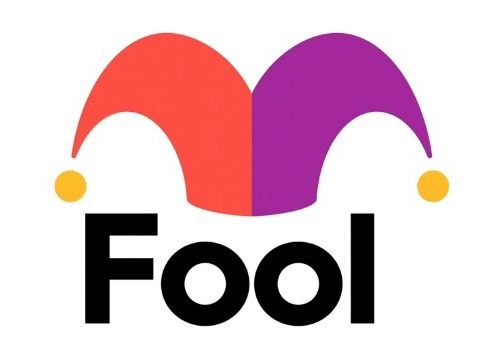The idea of becoming a 401(k) millionaire may seem unrealistic to some. After all, most people just don’t seem to earn enough money at their jobs to amass a seven-figure account with their workplace retirement plan.
The fact is, however, it’s more achievable than you might think. Mutual fund company Fidelity reports that as of the third quarter of 2024, over 540,000 participants in the workplace retirement plans it administers were sitting on million-dollar-plus stashes. So, it can be done.
Where to invest $1,000 right now? Our analyst team just revealed what they believe are the 10 best stocks to buy right now. See the 10 stocks »
What’s their secret? These people just did four very important things that you can also do for yourself.
1. Just contribute, even when it hurts
Plenty of people who may just be starting their careers or who don’t make a ton of money don’t contribute to them, fearing they’ll need immediate access to every penny they make.
This short-term avoidance of a potential problem, however, often hurts in the long run. One or two years of not saving for retirement can easily turn into four or five years, if not more. This can make all the difference, too.
Just for the sake of comparison, investing just $3,000 per year in an S&P 500 index fund for 30 years will leave you with roughly $570,000. Saving $3,000 per year in the same index fund for 35 years, however, would very nearly make you a millionaire… $957,000 (assuming you earn the average 10% per year on your invested dollars). What a difference just five years makes! The difference between the two scenarios is that at the end of the first five years of the second one, you should have something in the ballpark of $20,000, which is a huge head start when time is your best growth ally.
So, even though it may cause some budgetary strain when you’re first starting out, find a way of coming up with it and then commit the money as soon as you can — even if it hurts.
2. At least max out your company’s match
That $3,000 figure is an arbitrary one, of course. Some will end up contributing less, while others are able to do more. Regardless of how much you can divert from your paycheck into your 401(k) account, at the very least, make sure you qualify for the maximum amount of money your employer is willing to also deposit into your retirement account on your behalf.
The amount changes from one company to the next. It can even change from one year to the next. For perspective, though, Fidelity says that during the third quarter of last year, U.S. employers chipped in an average of $1,240 into their employees’ 401(k) plans compared to $2,350 worth of these workers’ own salary being deferred into these accounts. This jibes with the fund company’s estimate of the typical employer match being in the ballpark of between 4% and 5% of worker’s earnings. Said another way, about one-third of what’s being saved in work-sponsored retirement accounts these days is coming from the employer rather than the employee.
You will, of course, need to find out what your employer’s present matching rate is and contribute accordingly. After all, your company is only going to give (up to a limit) based on the amount of money you’re willing to contribute for yourself; that’s why it’s called a “match.” Given that this is literally free money, though, it’s absolutely worth the effort and sacrifice.
3. Don’t try to beat the market
Most retirement plan administrators will also be mutual fund companies like the aforementioned Fidelity or Vanguard, featuring a modest selection of their own funds. Even for the administrators that aren’t in the business of managing mutual funds, however, your investment choices within these plans will likely be limited to a frustratingly small set of fund options.
But don’t sweat it. Just find the most basic index fund — or something as close to an index fund as you can find — and opt for that one. Why? Because most mutual funds that are intended to beat the market usually end up lagging behind.
Standard & Poor’s keeps regular tabs on this reality, recently reporting that over the course of the past five years, 77% of large-cap funds available to U.S. investors underperformed the S&P 500. For the past 10 years, nearly 85% of these same funds trailed the benchmark index. And if you think it was the same market-beating names that led in both time frames, think again. Standard & Poor’s adds that only about 2% of large-cap funds remain in the top half of all performers during any five-year stretch.
You’d have to be very lucky to identify those funds, assuming you have access to them at all. So, if you want to give yourself the best chance at the best performance, your best bet is not trying to beat the market but rather simply matching its results.
4. Give it enough time
Finally — and this may be the most important tip of all — understand that becoming a 401(k) millionaire is likely going to take a long, long time, even if you’re making the biggest-possible contributions to these accounts. Certainly, many of today’s investors with seven-figure retirement accounts needed a minimum of 30 years to get there. Some may have taken closer to 40 years.
These millionaires also suffered several sweeping ups and downs from the stock market while they were saving, and can now look back and recognize that the “ups” always end up making the “downs” worth waiting out. Indeed, most of these investors gladly continued to contribute when things looked grim for the market, as they knew they were buying stocks at discounted prices that wouldn’t last forever.
This might help motivate any investors who are too discouraged to start or stick with it: Your annual net returns on your cumulative savings don’t get bigger than your annual contributions until about 20 years in. Then they outright explode. Indeed, roughly half of any money earned on savings accumulated in any retirement account doesn’t materialize until about the last one-third of the savings period.
That’s why you’ll want to keep adding what you can when you can, even if it’s a seemingly small amount — you want to reach these turning points with as much tucked away as you can possibly muster. The real fireworks don’t start going off until after that.
The $22,924 Social Security bonus most retirees completely overlook
If you’re like most Americans, you’re a few years (or more) behind on your retirement savings. But a handful of little-known “Social Security secrets” could help ensure a boost in your retirement income. For example: one easy trick could pay you as much as $22,924 more… each year! Once you learn how to maximize your Social Security benefits, we think you could retire confidently with the peace of mind we’re all after. Simply click here to discover how to learn more about these strategies.
View the “Social Security secrets” »
James Brumley has no position in any of the stocks mentioned. The Motley Fool has no position in any of the stocks mentioned. The Motley Fool has a disclosure policy.
 marketbeat.com
marketbeat.com benzinga.com
benzinga.com fool.com
fool.com



